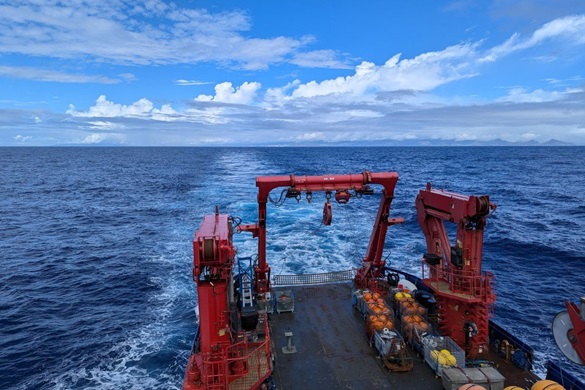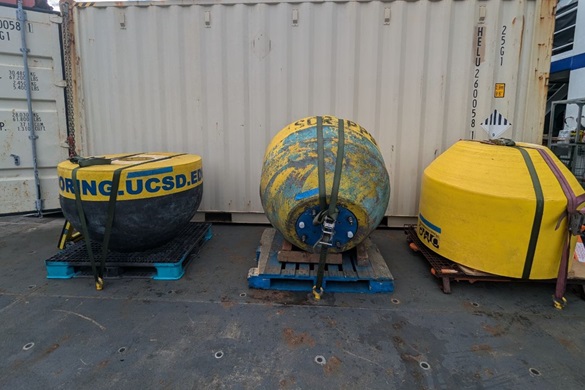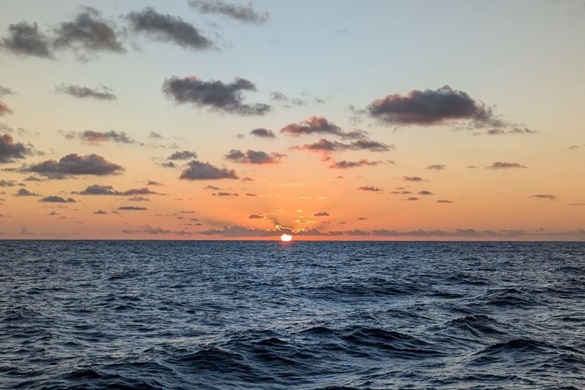Dr Anna-Lena Deppenmeier, a lecturer in Ocean Sciences with the University's School of Environmental Sciences and a NERC Independent Research Fellow, is currently part of the MOTIVE24 research cruise in the Pacific Ocean.
A physical oceanographer and climate scientist with a focus on tropical air-sea interactions, Dr Deppenmeier is part of an international team of scientists who are sailing from Hawaii out to the Intertropical Convergence Zone (ITCZ) on board Sikuliaq, a 261-foot oceanographic research ship.
The ICTZ is a remote area in the equatorial Pacific and the team are specifically studying tropical instability waves - these are a phenomenon in which the interface between areas of warm and cold sea surface temperatures near the equator form a regular pattern of westward-propagating waves.
After seven days travelling at sea, they found the locations of the sharp gradients between cold and warm water and set about deploying a range of different instruments (including floats, gliders, sail drones and wire walkers) to measure the the current, conductivity, temperature, density and salinity of the surrounding water.

One of the instruments is a sea glider called Pigeon. Pigeon is collecting vital measurements, including temperature, salinity, oxygen and chlorophyll, while traveling up to 20 kilometers per day. A buoyancy-driven autonomous profiling glider capable of diving to depths of 990 meters, Pigeon is so called as she will travel the 1,100 miles back to her "nest" in Honolulu, Hawaii.
Other instruments will remain in the tropical Pacific until February 2025, studying equatorial upwelling and tropical instability fronts throughout the winter in the equatorial cold tongue.

Dr Deppenmeier said: "This is an amazing research cruise. We are working in arguably one of the most beautiful places on earth, with stunning sunsets every evening and we've spotted flying fish and shooting stars. The science being undertaken by the team on this cruise will provide new insight into tropical instability waves and how waves in the ocean interior generate mixing. This is particularly important in the tropical Pacific, where the tropical sunshine deposits immense amounts of heat into the surface layer of the ocean."
You can read Anna's daily blog from the cruise here: Research Cruise MOTIVE24 - Aloha 140°West! by Anna Deppenmeier | Polarsteps







